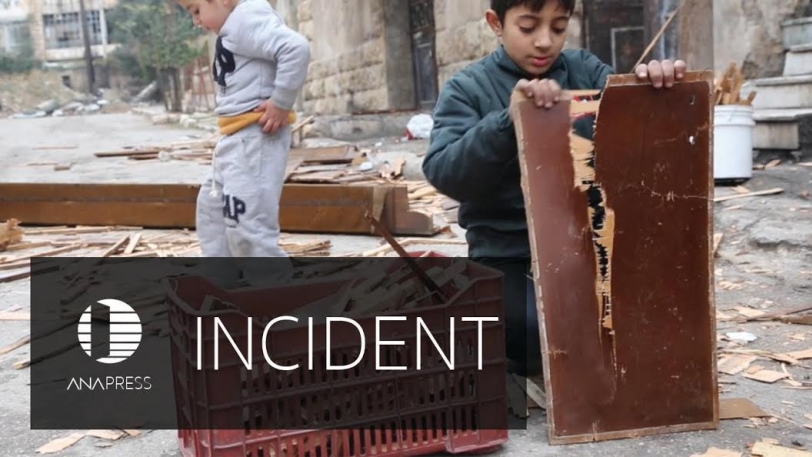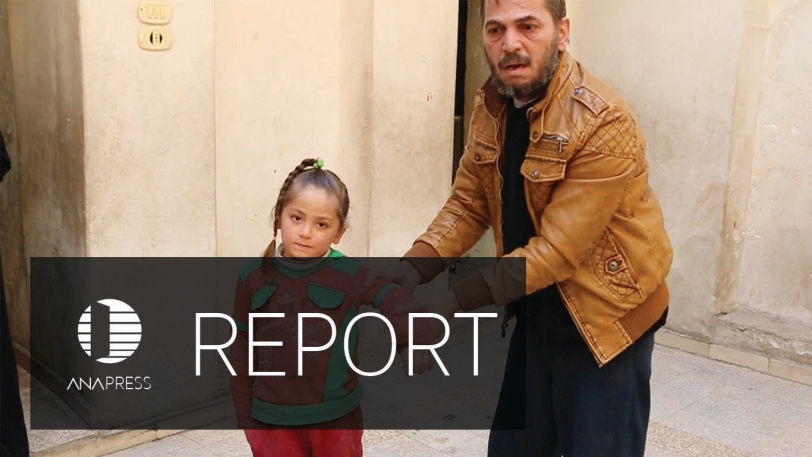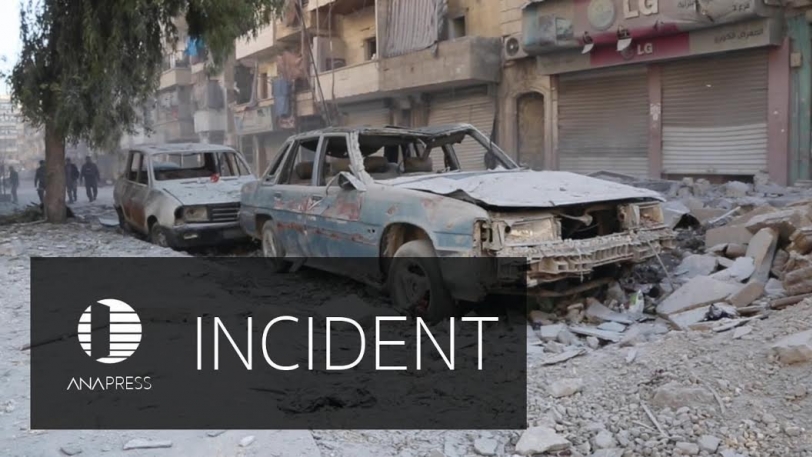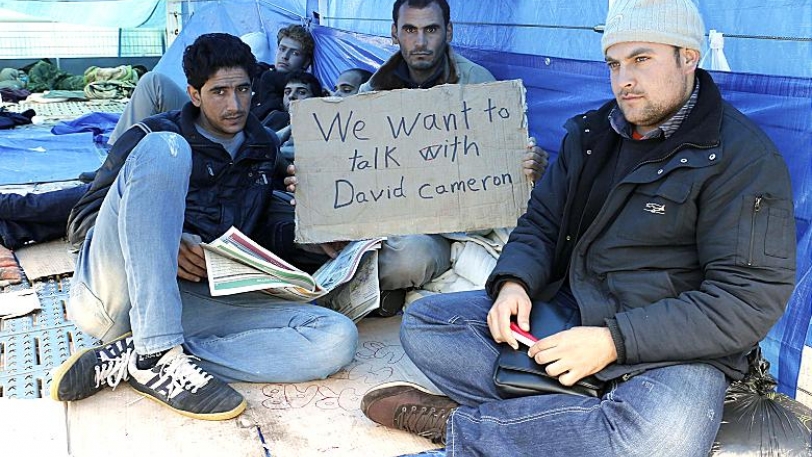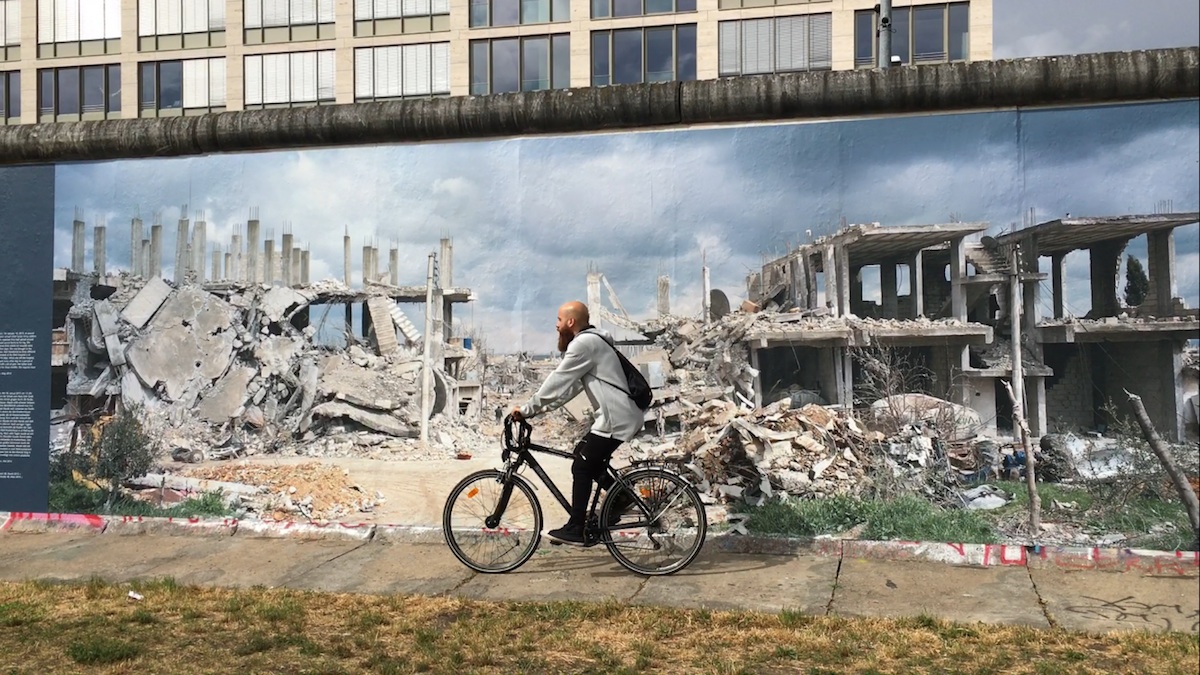
Syria's War on Berlin's Wall
A photo exhibition brings Syria's destroyed cities to the German capital
Since witnessing the fall of the Berlin Wall, German photographer Kai Wiedenhöfer has been focused on walls and barriers all over the world, with a special focus on the Middle East. His latest exhibiton, WARonWALL, showcases the destruction Syrian civilians and cities have witnessed over the past five years.

The photos range from pictures of destroyed buildings in the Northern Kurdish city of Kobane to photos of Syrians from all over the country who have lost limbs to indiscriminate shelling.
Tourists stand and take photos and selfies next to the stretch covered in photos of the destruction, some stopping to read
the accompanying information written next to the photos.
Tourists stand and take photos and selfies next to the stretch covered in photos of the destruction, some stopping to read the accompanying information written next to the photos. Tourists stand and take photos and selfies next to the stretch covered in photos of the destruction, some stopping to read the accompanying information written next to the photos.
stand and take photos and selfies next to the stretch covered in photos of the destruction, some stopping to read the accompanying information written next to the photos. Tourists stand and take photos and selfies next to the stretch covered in photos of the destruction, some stopping to read the accompanying information written next to the photos. Tourists stand and take photos and selfies next to the stretch covered in photos of the destruction, some stopping to read the accompanying information written next to the photos. Tourists stand and take photos and selfies next to the stretch covered in photos of the destruction, some stopping to read the accompanying information written next to the photos. Tourists stand and take photos and selfies next to the stretch covered in photos of the destruction, some stopping to read the accompanying information written next to the photos.
stand and take photos and selfies next to the stretch covered in photos of the destruction, some stopping to read the accompanying information written next to the photos. Tourists stand and take photos and selfies next to the stretch covered in photos of the destruction, some stopping to read the accompanying information written next to the photos. Tourists stand and take photos and selfies next to the stretch covered in photos of the destruction, some stopping to read the accompanying information written next to the photos. Tourists stand and take photos and selfies next to the stretch covered in photos of the destruction, some stopping to read the accompanying information written next to the photos. Tourists stand and take photos and selfies next to the stretch covered in photos of the destruction, some stopping to read the accompanying information written next to the photos.
"Experiencing these photographs one should not start thinking that war and suffering are inevitable and so dramatic that nothing can be changed," Wiedenhöfer writes on the exhibition site. "Politics and history are always concrete – this also means events can always be changed through concrete political measures. So this is exactly where we have to start working – after years of sitting on the side-lines and watching the war in Syria in agony with a guilty conscience. The people of Syria are demanding the same human values and rights which we Europeans preach and hold in high esteem; values, behind which stand the millions of dead of our own wars."



